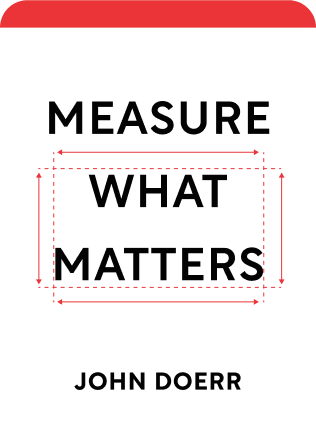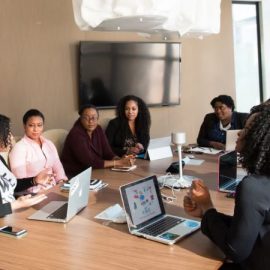

This article is an excerpt from the Shortform summary of "Measure What Matters" by John Doerr. Shortform has the world's best summaries of books you should be reading.
Like this article? Sign up for a free trial here .
What is continuous performance management? How can you use continuous performance mangement to track your OKRs?
Traditionally, performance was measured using annual or quarterly feedback review systems and meetings. With OKRs, companies can rely on a system of continuous performance management to track progress. This is a more effective way to track progress based on goals rather than the pressure of an annual review.
Read more about the continuous performance management model below.
Traditional Annual Feedback vs. Continuous Performance Management
Most leaders agree that the traditional system of annual performance reviews doesn’t work: According to studies, only 12% think the process is “highly effective” and only 6% think it’s worth their time.
They’re probably right. Traditional performance review tools like rankings and bell curves, combined with recency bias, mean that annual reviews often aren’t measured well or fairly. They also don’t give feedback until long after it’s most useful.
In contrast, Doerr’s system of continuous performance management allows managers to give feedback regularly, help employees improve throughout the year, and address issues as they arise. The continuous performance management model is more about managing and coaching than about judging employee performance.
| Annual Performance Review | Continuous Performance Management |
| Annual feedback | Continuous feedback |
| Based on compensation | Divorced from compensation |
| Manager directs | Manager coaches |
| Focused on results | Focused on the process |
| Focused on employee weaknesses | Focused on employee strengths |
| Bias prone | Fact-based |
CFRs: The Tools of Continuous Performance Management
Just as OKRs are your tools for implementing Doerr’s improved goal-setting system, CFRs are your tools for implementing a continuous performance management system.
- C: Conversations between employees and managers
- F: Feedback both from and to managers and among peers
- R: Recognition from peers and managers for small and large contributions toward goals
OKRs and CFRs reinforce one another. You need both the hard data of OKRs and the interpersonal relationships fostered by CFRs for your company to thrive.
C: Conversations
Conversations should happen throughout the year, in both formal and informal environments. The wrap-up stage at the end of the OKR cycle is also a good time for these conversations. At a minimum, managers and employees should meet once a month. A Gallup poll found that frequent one-on-one meetings with managers increase employees’ engagement levels by a factor of three.
As a manager, your conversations with employees cover 5 main topic areas (but you don’t need to cover all of them in one conversation):
- Reflecting on past goals and setting new ones: Discuss the employee’s OKRs for the next cycle and decide together how to align them with the priorities of the team, the department, and the organization as a whole.
- Updates on progress: Discuss data on the employee’s progress toward OKRs and problem solve if necessary.
- Coaching: Guide the employee in his or her thinking about the OKR approach, and encourage the employee to offer feedback to help you, the manager, do your job better.
- Professional development: Work with the employee to develop the necessary skills, knowledge, and mindset to succeed at the company.
- “Lightweight” performance reviews: Discuss what the employee has accomplished since your last meeting, and view this progress within the context of the company’s priorities and needs.
Overall, the main dialogue focuses on five questions:
- What are you working on right now?
- How’s it going? Are you making progress toward your OKRs?
- Are there any roadblocks keeping you from making progress?
- What do you need from me to reach your OKRs?
- In what ways do you need to grow to reach your career goals?
F: Feedback
In order to improve, employees need to know how they’re doing—often, they don’t have enough distance from their work and performance to make this call themselves.
You can elicit and guide feedback in one-on-one meetings with these questions:
- Are my/your/our OKRs the right ones?
- If I/you/we achieve these OKRs, will others see it as a big success?
- Do you have any feedback on how I could improve my performance, make more progress toward my goals, or set more ambitious OKRs?
- What do you need from me to succeed?
Feedback is only constructive if it’s specific. For example:
- Constructive negative feedback: “When you started the meeting 15 minutes late yesterday, it made you appear disorganized.”
- Constructive positive feedback: “Your presentation was fantastic. The opening anecdote really drew your audience in, and closing with action steps got people inspired and made it clear what you needed people to do.”
Both negative and positive feedback have their place, as long as the feedback is specific. As you and your team become more comfortable with feedback, aim to create a culture where everyone feels comfortable giving feedback to everyone else, whether a peer or manager.
R: Recognition
Recognition should be both private and public, based on peer nominations, and focused on actions. Studies show that the voluntary turnover rate of “high-recognition” companies is 31% lower than that of “low-recognition” companies
There are many ways to establish a “high-recognition” culture:
- Introduce a peer-to-peer recognition system. Employees start looking for opportunities to recognize their peers and gratitude and morale increase. For example, at Zume Pizza, Friday meetings end with the opportunity for employees to give a shout out to the work of their peers.
- Focus on actions and results. Instead of honoring an Employee of the Month, honor an Achievement of the Month. Celebrate people for what they do, particularly when they complete OKRs that contribute to company goals or they demonstrate company values.
- Tell recognition stories. Use the company’s blog or newsletter to tell the story of how a particular goal was accomplished, helping others see what it takes to get results and gain recognition.
- Recognize people often, and for the little things, too. Small accomplishments can make a huge difference in the long-run. Look for seemingly small achievements, like working extra hard to meet a deadline or turning in a proposal that’s particularly polished. Look for things you, as the manager, often take for granted.
- Link recognition to the company’s goals. When you have a particular, company-wide OKR you’re trying to push, focus recognition on the people who are helping the company make progress toward it.
How Pact Uses Continuous Performance Management
Pact is an international trade and development nonprofit based in Washington, D.C. Its version of the continuous performance management model has four elements:
1. One-on-one meetings (monthly): These are informal opportunities for employees and managers to discuss progress and any roadblocks.
2. Review of OKR progress (quarterly): During these meetings, managers ask employees, “Did you reach your OKRs this quarter? What did you get done this quarter? What didn’t get done? Why? What do we need to change moving forward?”
3. Professional development conversation (semi-annually): Employees discuss where they’ve been in their careers, where they are now, where they want to go, and how their manager and company can help them get there.
4. Self-assessment and reflection (ongoing): Employees learn to seek out concrete feedback from managers and peers. For instance, if a peer compliments your presentation, rather than merely thanking her, you can ask her to tell you one thing she liked about it.
Divorce Compensation from OKRs and CFRs
Whereas a traditional annual performance review uses the number and percentage of goals achieved as the basis for raises or bonuses, the joint OKR/CFR system functions independently of compensation. Discussions regarding compensation should happen at a different time, and on a different cycle, than continuous performance management conversations.
Inevitably, OKR scores will, and should, be part of the compensation equation. But compensation should never be entirely based on OKR achievements. At Google, OKRs account for less than a third of an employee’s overall performance rating.
Why divorce compensation from OKRs? Remember, objective scores don’t always accurately reflect reality. Employee A, who meets 75% of her ambitious stretch goals, and Employee B, who meets 90% of his non-stretch goals but doesn’t challenge himself, don’t deserve the same bonus.
Example of Continuous Performance Management: Adobe
Before implementing their “Check-in” system (Adobe’s version of continuous performance management), managers at Adobe devoted eight hours per employee during annual performance reviews, a total of 80,000 hours each year. Additionally, the process was demoralizing—every year, the annual review brought a spike in the turnover rate, as disappointed employees left for jobs where their talents might be more highly valued.
Adobe’s current Check-in system looks to the future, helping employees establish goals, understand what’s expected of them, and develop professionally. Regular Check-ins are separate from the annual “Rewards Check-in,” which addresses compensation.
Compare Adobe’s old system of annual performance reviews with the Check-in system.
| Then: Annual Performance Reviews | Now: Check-In System | |
| Goal setting | Employees set goals at the beginning of the year. Often, they didn’t revisit them until the end of the year. | Employees set goals at the beginning of the year and reflect on them and revise them regularly, in partnership with their managers. |
| Giving feedback | Managers spent many hours at the end of the year giving feedback and writing reviews. | Managers give feedback daily (informally) and every 6 weeks (formally). There’s no written documentation of feedback. |
| Compensation | Managers determined their employees’ salaries and equity by ranking them. This fostered competition among employees. | Managers determine their employees’ salaries and equity based on their annual performance. There’s no ranking or rating system. Employees work as a team rather than compete. |
| Meeting regularity | Feedback meetings didn’t happen regularly throughout the year. Employees would become more productive at the end of the year, as performance reviews neared. | Feedback meetings happen at least quarterly. Employees are consistently productive throughout the year. |
| HR role | HR processed all paperwork at the end of the year and made sure managers completed all the review steps. | HR supports managers and employees by providing them with the tools to have productive conversations. Paperwork is minimal. |
| Training and Resources | HR partners irregularly provided coaching and resources on providing feedback and evaluating employees. | A new Employee Resource Center offers training and resources to employees whenever they need it. |
After implementing Check-in, the number of employees who voluntarily left Adobe dropped significantly.
Continuous performance management helps companies like Adobe track progress. You can employ your own continuous performance management system, too.

———End of Preview———
Like what you just read? Read the rest of the world's best summary of John Doerr's "Measure What Matters" at Shortform .
Here's what you'll find in our full Measure What Matters summary :
- How Google uses OKRs to rally 100,000 employees in the right direction
- How to avoid setting useless OKRs, and how to set great ones
- Key subtle behaviors your team must master to make OKRs work






